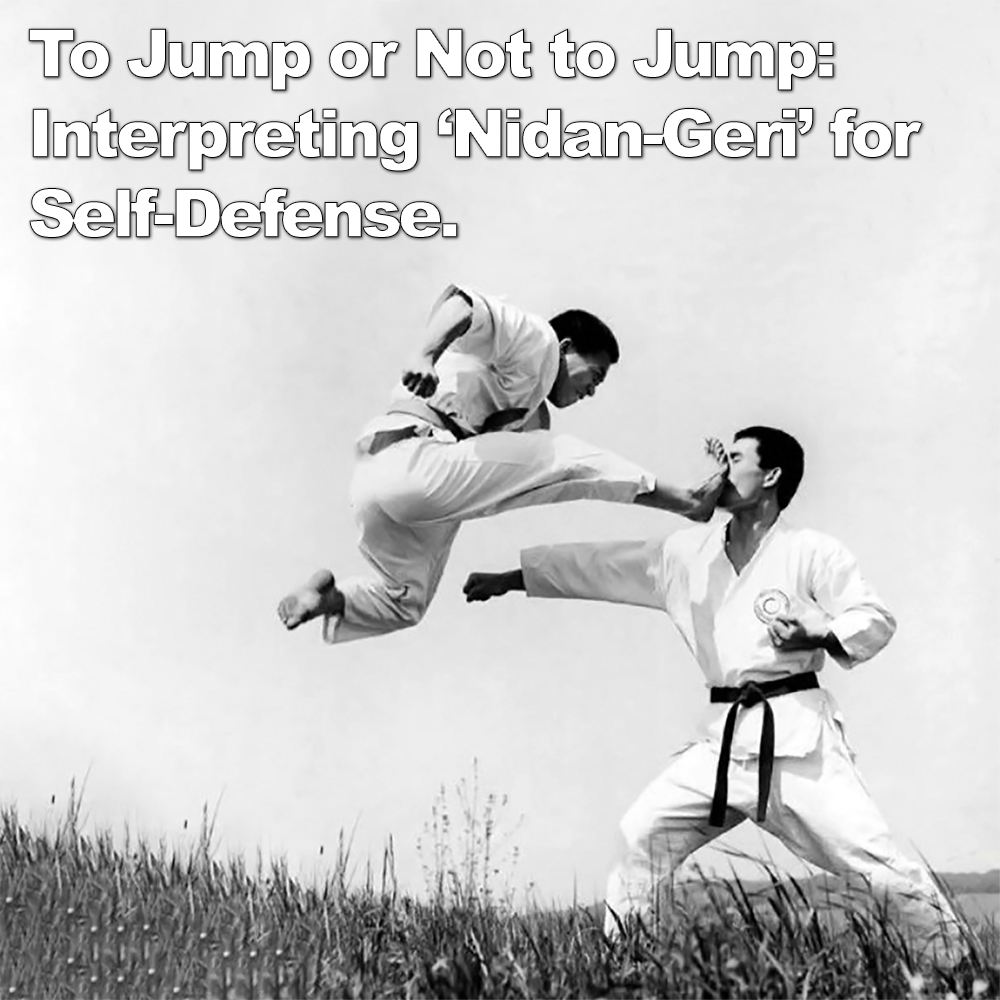
(Approx 2 minute 10 second read)
In most kata, the template shows us that kicks tend to be delivered singularly, but there are a few kata where multiple kicks are presented. This raises an important question: What purpose do these multiple kicks serve in the context of self-defense?
.
Commonly referred to as “Nidan-geri” (二段蹴り). Traditionally, this is seen as a “double kick”, often performed as two kicks with a jump for height. However, if we break down the translation – “Ni” (二) meaning “two” and “Dan” (段) meaning “step” – rather than two kicks delivered together, perhaps there is another option.
.
In a real-world self-defense scenario, kicks are best executed low. From a pragmatic perspective, losing connection with the ground – whether through jumping or using high kicks – introduces significant danger. Of course, there is the rare breed who excel at these types of kicks. And for an old duffer, I can still kick pretty high too.
.
But there’s no point in increasing the danger when the scenario is already stressful and potentially life-threatening. Additionally, there are other factors to consider – the clothing you are wearing, footwear, and the environment, all of which can be restrictive in a real confrontation. Jumping head kicks may look impressive in competition, but they introduce considerable risk in practical combative situations, where staying grounded is essential.
.
In tournaments, jumping kicks and head-height techniques work well because both participants share similar skills and are engaged in a back-and-forth exchange.
.
So, let’s consider Nidan-geri from a more practical angle.
.
Instead of a double kick – let’s consider a single kick with an option. Remember, we want to kick low – so you could be targeting whichever leg is most accessible. Depending on the opponent’s position in relation to us, left or right leg doesn’t matter, aiming to destabilize the attacker by driving that leg backward and forcing their head forward.
.
Perhaps then the second kick accounts for an unsuccessful first attempt? Kata, in many ways, teaches us to anticipate and recover from failure. The second kick being an alternative in case the initial kick doesn’t achieve the desired result, depending on the opponent’s response. You kick one leg backwards it doesn’t give you the result you want, so you kick the opponents other leg.
.
Remember that you don’t have to follow the kata movements from beginning to end – choose what you need, so if the first kick works, move on.
.
Naturally, if you are close enough, the rising knee becomes an alternative tool as well.
.
The jump-kick version we see today is a modern addition in many kata, likely for sport or aesthetics, rather than part of the original fighting method, which has drifted far from its intended use. Some of the Okinawan kata show a much more subtle movement rather than the high jumps seen in many Japanese styles.
.
You have to deal what you are presented with. We know that originally, karate was not designed for trading blows in a consensual fight. For me, this interpretation of Nidan-geri is far more practical and aligns with the combative principles of karate. How do you interpret nidan-geri?
.
Written by AC.
Note that the image is for illustration purposes only (jumping) and may not reflect a ‘Nidan-geri’.
.
